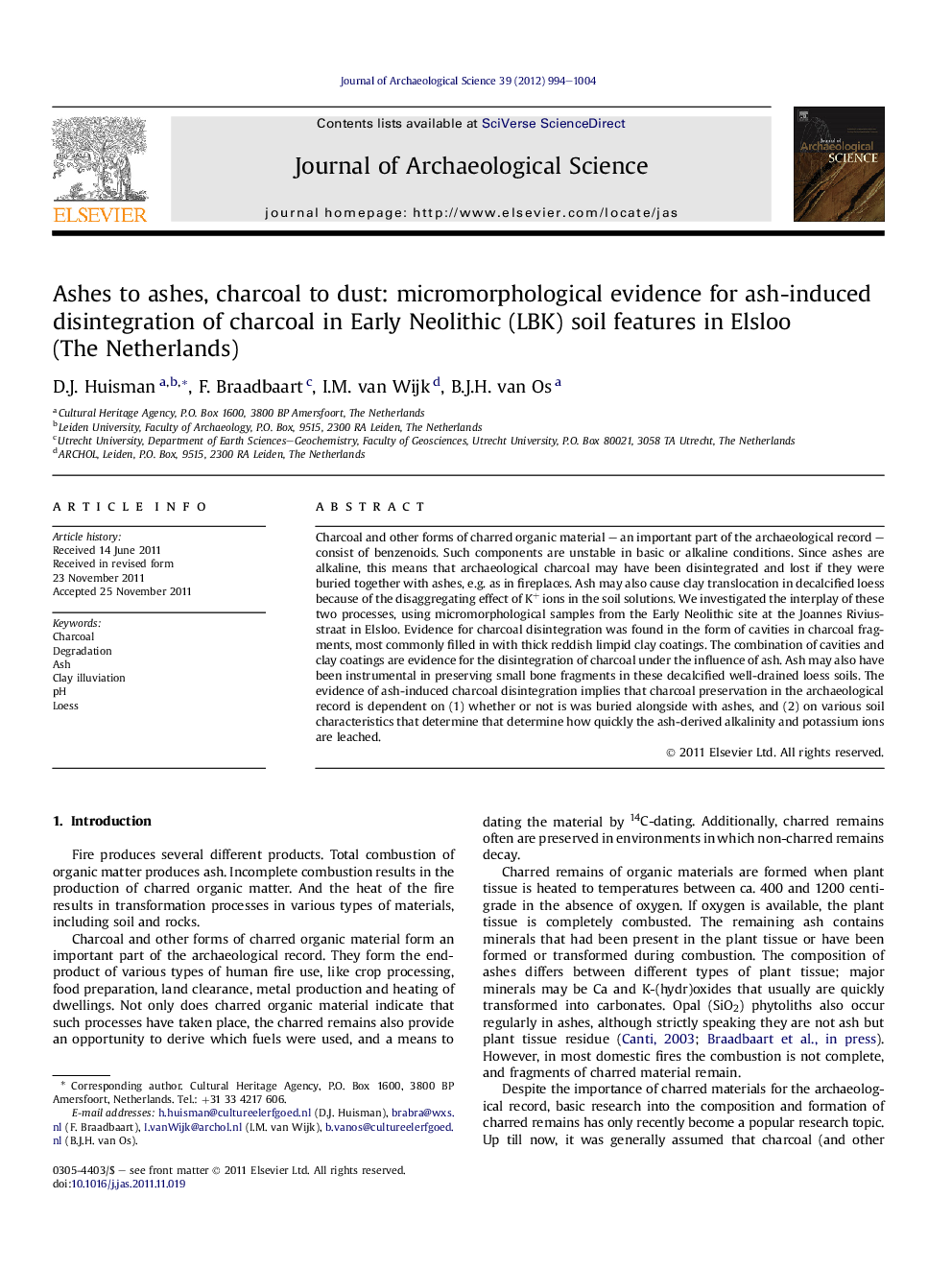| کد مقاله | کد نشریه | سال انتشار | مقاله انگلیسی | نسخه تمام متن |
|---|---|---|---|---|
| 1035591 | 943858 | 2012 | 11 صفحه PDF | دانلود رایگان |

Charcoal and other forms of charred organic material – an important part of the archaeological record – consist of benzenoids. Such components are unstable in basic or alkaline conditions. Since ashes are alkaline, this means that archaeological charcoal may have been disintegrated and lost if they were buried together with ashes, e.g. as in fireplaces. Ash may also cause clay translocation in decalcified loess because of the disaggregating effect of K+ ions in the soil solutions. We investigated the interplay of these two processes, using micromorphological samples from the Early Neolithic site at the Joannes Riviusstraat in Elsloo. Evidence for charcoal disintegration was found in the form of cavities in charcoal fragments, most commonly filled in with thick reddish limpid clay coatings. The combination of cavities and clay coatings are evidence for the disintegration of charcoal under the influence of ash. Ash may also have been instrumental in preserving small bone fragments in these decalcified well-drained loess soils. The evidence of ash-induced charcoal disintegration implies that charcoal preservation in the archaeological record is dependent on (1) whether or not is was buried alongside with ashes, and (2) on various soil characteristics that determine that determine how quickly the ash-derived alkalinity and potassium ions are leached.
► Charcoal fragments in Neolithic soil features in loess show evidence for disintegration.
► Disintegration is correlated with coatings of illuviated clay.
► Both features are linked to past alkalinity due to the deposition of ashes in the soil features.
► This is the first field evidence for decay of charcoal due to ash-induced alkalinity.
Journal: Journal of Archaeological Science - Volume 39, Issue 4, April 2012, Pages 994–1004